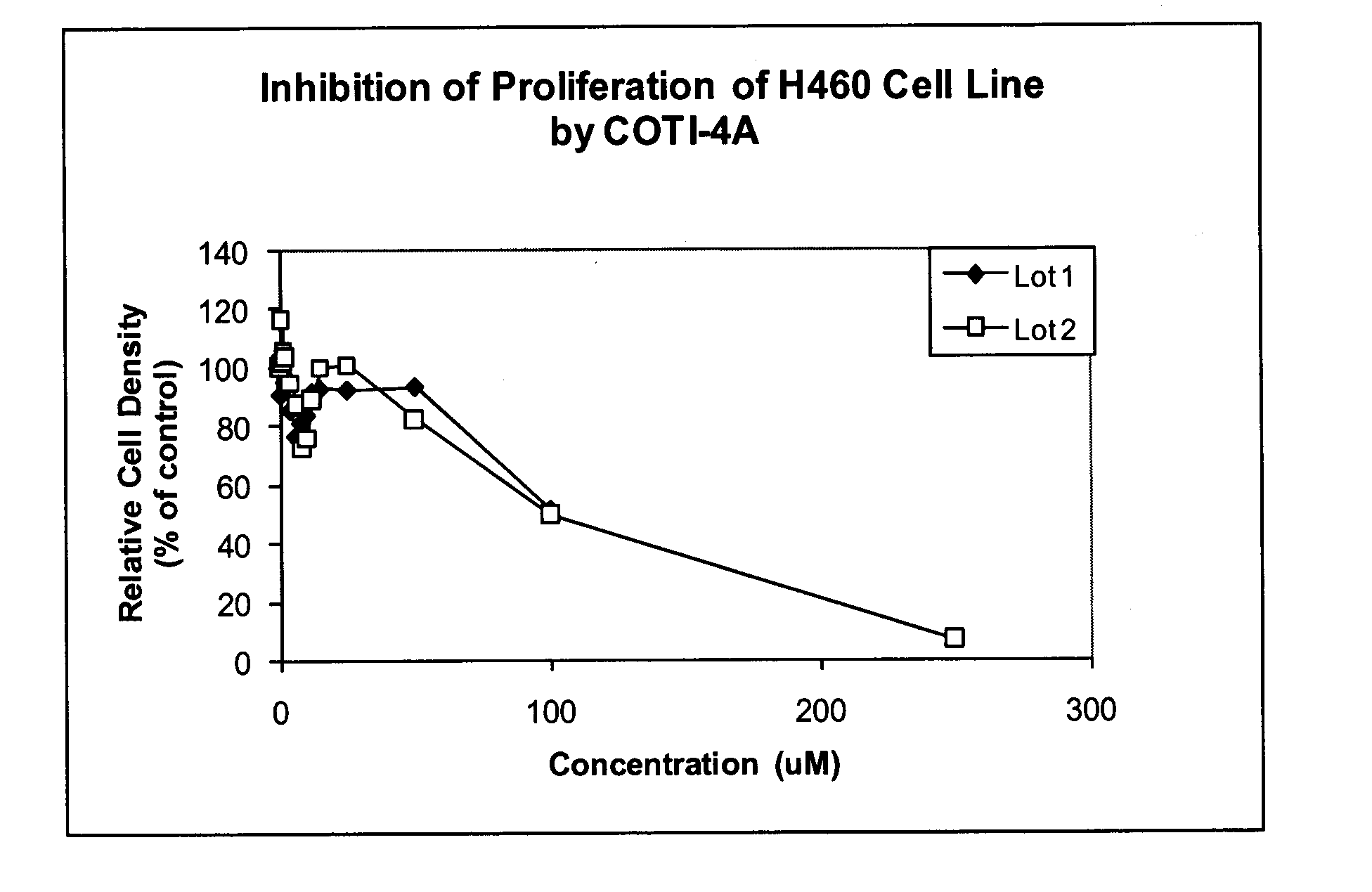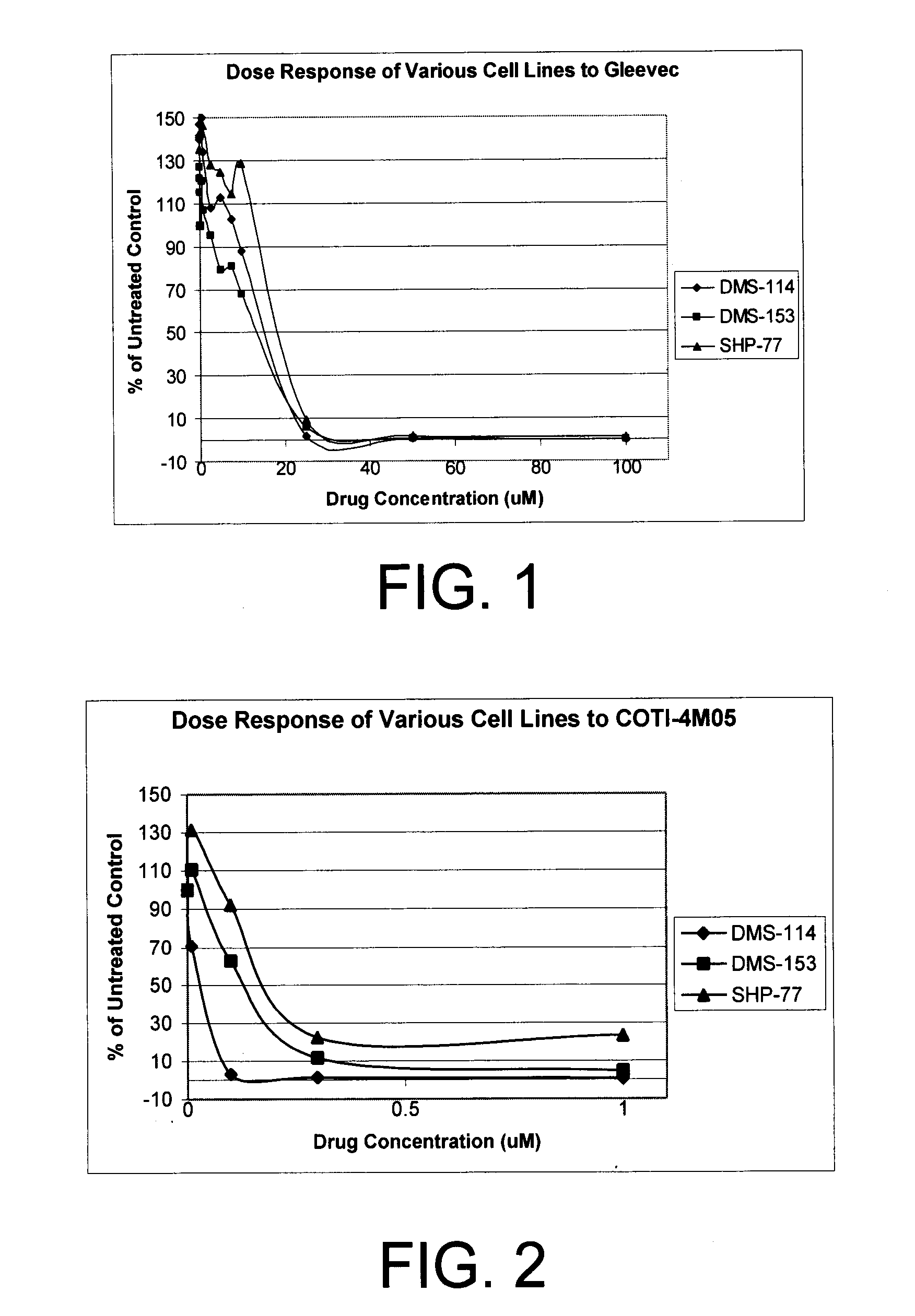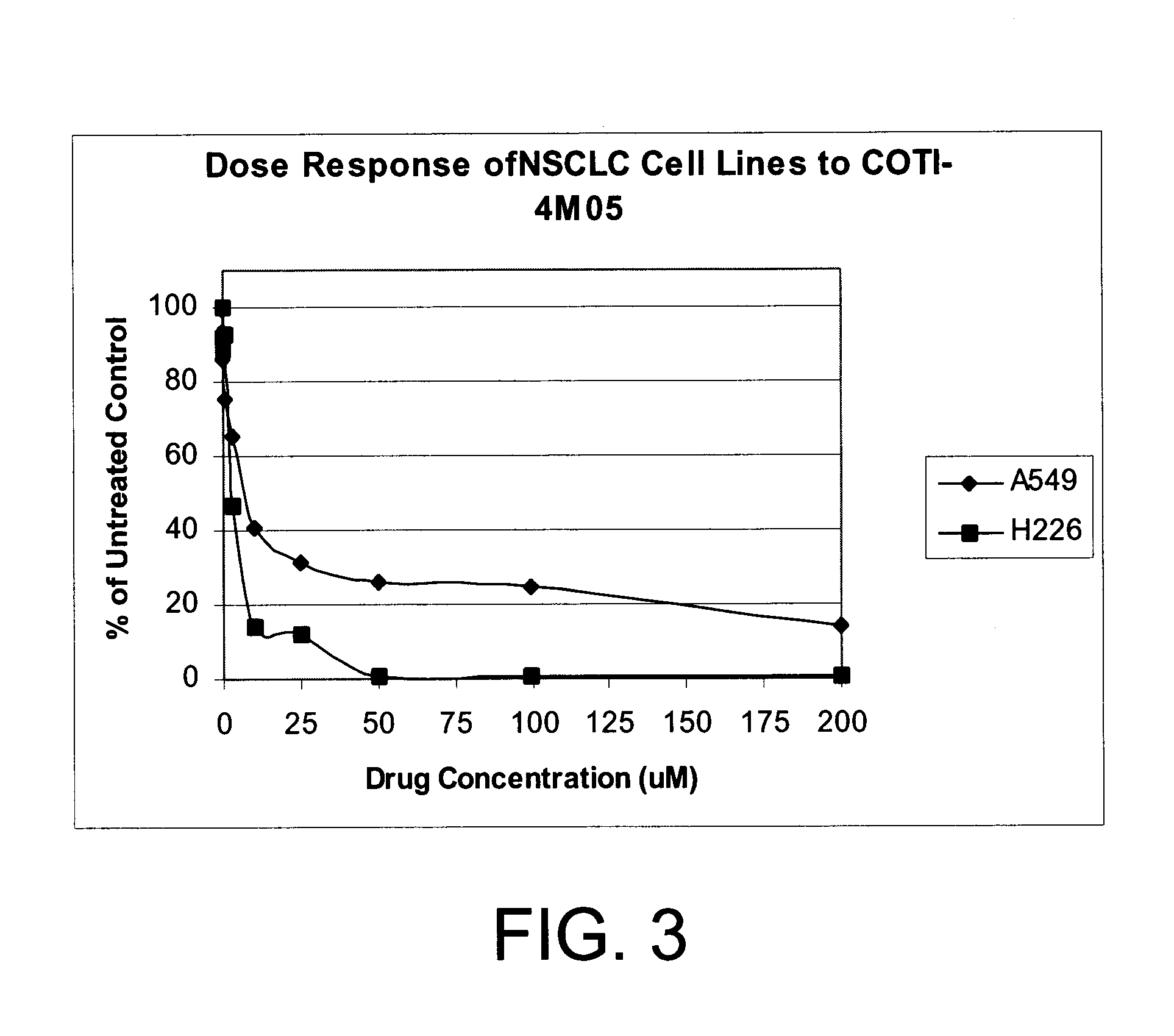Compounds and method for treatment of cancer
- Summary
- Abstract
- Description
- Claims
- Application Information
AI Technical Summary
Benefits of technology
Problems solved by technology
Method used
Image
Examples
example 1
COTI-4 (1B)
[0186]IC50 and Dose Response Determination
[0187]The ability of the compounds of Formula VII to inhibit tumor cell growth in vitro of three (3) human small cell lung cancer cell lines and three (3) human non-small cell lung cancer cell lines was evaluated. Specifically, COTI-4 (1B, also referred to as COTI-4MO5) was tested.
[0188]Table 1 shows the IC50, or the molar concentration of the compound required to produce 50% of the maximum possible inhibitory response. As a comparative example, Gleevec® (imatinib mesylate, Novartis Pharmaceutical Inc.) was used. Gleevec® is an FDA-approved anti-tumor drug for chronic myelogenous leukemia, which acts as an ATP-analog to inhibit tyrosine kinase. In DMS-114, DMS-153 and SHP-77 SCLC tumor cells, compound COTI-4MO5 (1B) was found to be more effective than Gleevec®.
TABLE 1COTI-4M05 Inhibition of Human SCLC Cell LinesIC50 (nM)Cell lineDMS-114DMS-153SHP-77COTI-4M0530130173Gleevec ®15,73314,04118,835
[0189]FIG. 1 illustrates the dose respo...
example 2
COTI-4
[0200]Inhibition of Tumor Growth
[0201]In vivo testing of the capacity of COTI-4MO5 and Taxol® (paclitaxel, Bristol Myers Squibb) to inhibit the growth of human SHP-77 SCLC cells as xenograft in immunocompromised mice was evaluated.
[0202]SHP-77 SCLC cells were grown in culture and injected into each flank of NCr-nu mice (T cell-deficient immunocompromised mice, suitable for growth of this cell line) (2×106 cells per injection, in Matrigel™). Mice harbouring SHP-77 tumour xenografts were treated with COTI-2MO5 or COTI-4MO5, as described for the data shown in FIG. 4. One day after injection of tumour cells, groups of 5 mice each were injected with 3 mg / kg of COTI-2MO5 or COTI-4MO5 (i.p.), once every 2 days, up to 38 days. Tumour size was estimated at 5, 10, 17, 24, and 38 days, by external caliper measurement. Animals were humanely euthanized after the 38 day tumour measurement.
[0203]FIG. 4 depicts the effect of a compound, referred to herein interchangeably as COTI-4, COTI-4MO5,...
example 3
COTI-4A (1A)
[0211]IC50 and Dose Response Determination
[0212]The ability of compounds of COTI-4A (1A) to inhibit tumor cell growth in vitro of three (3) human small cell lung cancer cell lines and three (3) human non-small cell lung cancer cell lines was evaluated.
[0213]The capacity of the compounds of formula 1A to inhibit growth of human small cell lung cancer cell lines (DMS-114, DMS-153, and SHP-77) and human non-small cell lung cancer cell lines (A549 adenocarcinoma-derived cells, H226 squamous cell carcinoma-derived cells, and H460 large cell carcinoma-derived cells) was tested.
[0214]In vitro inhibition of small cell lung cancer (SCLC) cell lines by the compound of formula 1A was done with standard human tumor cells (established cell lines available from the American Type Tissue culture collection). Cells were plated in plastic tissue culture plates and grown under standard conditions for each cell line, in carbon dioxide / oxygen atmosphere in plastic tissue culture plates, in t...
PUM
| Property | Measurement | Unit |
|---|---|---|
| Molar density | aaaaa | aaaaa |
| Composition | aaaaa | aaaaa |
| Electrical resistance | aaaaa | aaaaa |
Abstract
Description
Claims
Application Information
 Login to View More
Login to View More - R&D
- Intellectual Property
- Life Sciences
- Materials
- Tech Scout
- Unparalleled Data Quality
- Higher Quality Content
- 60% Fewer Hallucinations
Browse by: Latest US Patents, China's latest patents, Technical Efficacy Thesaurus, Application Domain, Technology Topic, Popular Technical Reports.
© 2025 PatSnap. All rights reserved.Legal|Privacy policy|Modern Slavery Act Transparency Statement|Sitemap|About US| Contact US: help@patsnap.com



